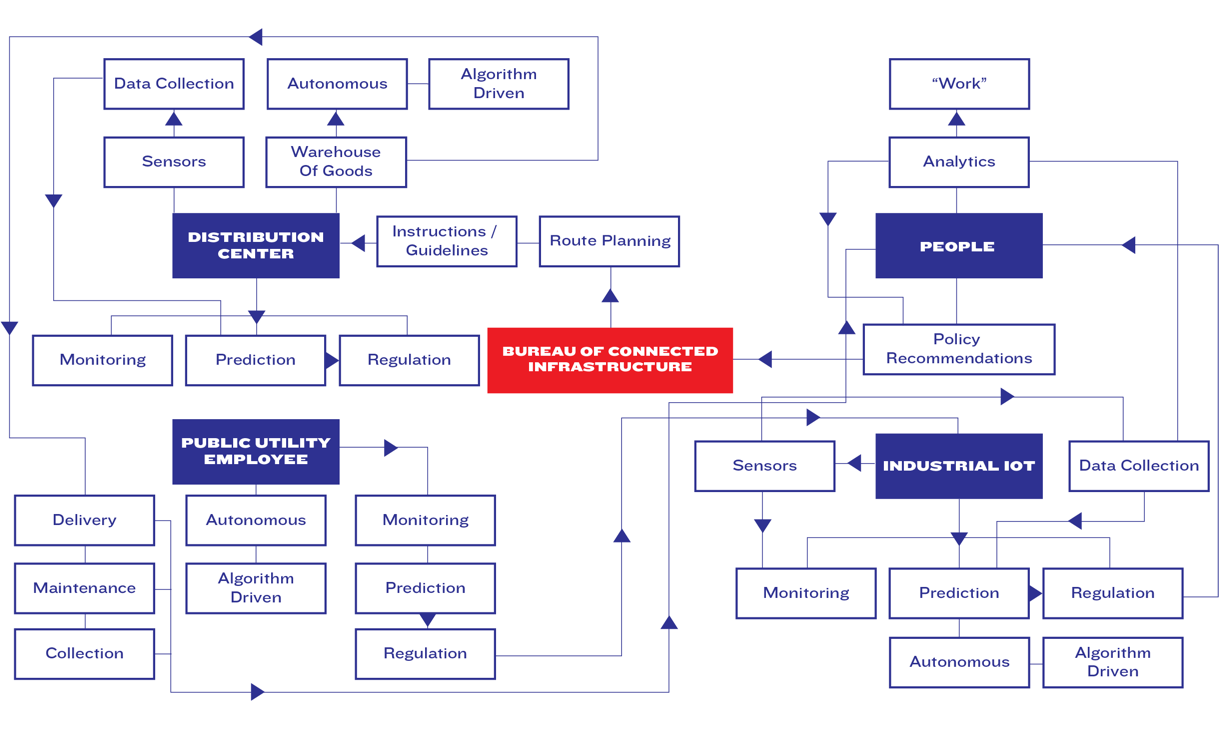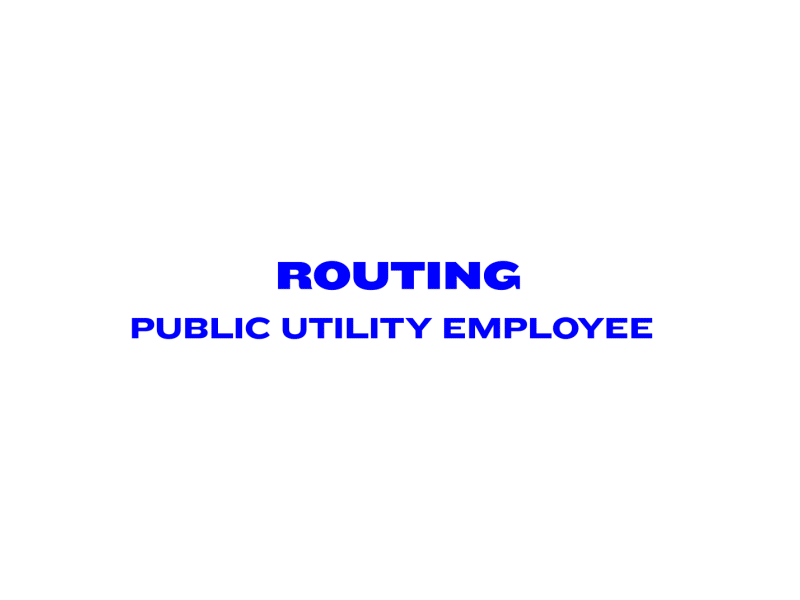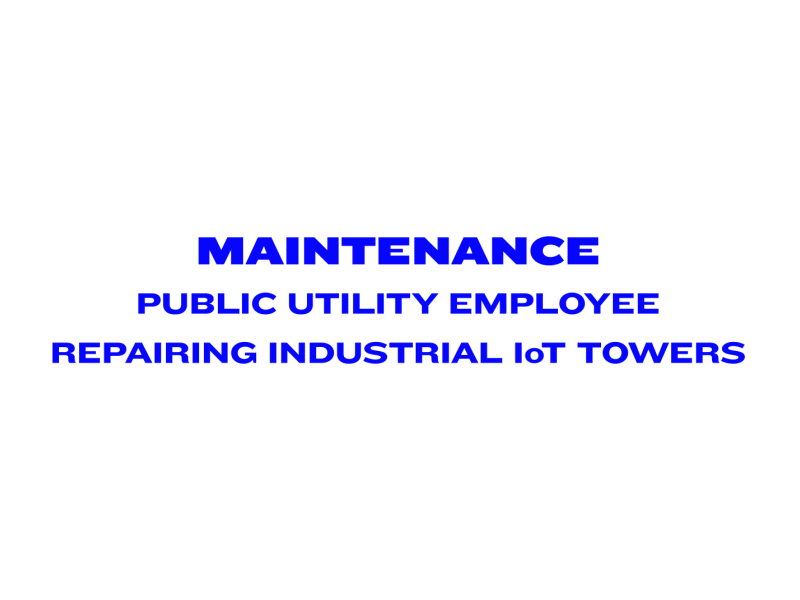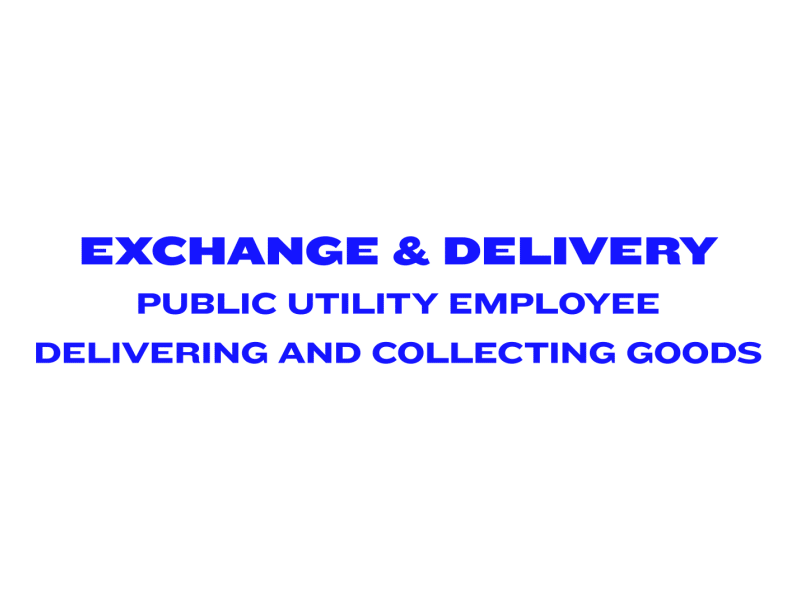

Dry / 干
Dry / 干 (gān) proposes a total automated bureaucracy wherein all systems are planned and maintained by sensors and algorithms. The system forecasts that in the near future, 2022, that all systems in smart cities will be enabled by autonomous algorithms. Dry models the approach of a top-down policy governing the spatial relationships and behaviors of all the stakeholders or actors in the environment.
To read about the whole project, Driverless Government, click here.
Year
2017–2018
Discipline & Research Area
Design Research, Speculative Design, Civics, IoT, Artificial Intelligence, and Machine Learning
Responsibilities
Research, Writing, Concept Development, World-building, and Animation
Stakeholders
Autonomous Actors & People
There are several important actors that allow the system to run. The actors are as follows: (1) The Bureau of Connected Infrastructure, (2) Distribution Center, (3) Public Utility Employee, and (4) Industrial IoT are all autonomous entities powered by machine learning to make decisions. For example, the autonomous Distribution Center receives instructions from the Bureau of Connected Infrastructure regarding its routes and quotas they need to fulfill. The Distribution Center stores all consumer goods and connect with the Public Utility Employees who deliver the goods to consumers. As they are allowed some agency in their work they can decide their own route after receiving instructions and deny or agree to the proposed routes of the Public Utility Employee.
All of these stakeholders must work together acting as checks and balances. Although humans are involved in the system they only provide oversight when the system doesn't work for them. The diagram below describes the responsibilities and functions of each stakeholder.


Figure 1: This diagram illustrates the whole system. Notable here is that people have ceded most of their responsibility to these other actors.
How it Works
The video displays how the system is imagined to work. It demonstrates using a figure-ground landscape the timing, movement, and behavior of the different actors. The machines create an increased dependency on Machine Learning and Industrial IoT to sense and govern the environment.
Public Utility Employee
An AI Bot
The Public Utility Employee (PUE) is the most important actor in the system as they provide all the services necessary to make the system thrive, serving as both a touchpoint between humans and the Bureau of Connected Infrastructure. Therefore constant regulation of each system acts as a way to check and balance each actor’s responsibility.
Routing
The routes that PUE takes are decided by themselves to be approved by the Distribution Centers and the Bureau of Connected Infrastructure.


Maintenance
PUEs are responsible for the monitoring of the Industrial IoT. Because the narrowness of Industrial IoT’s responsibility (surveillance and traffic regulation) their decision making becomes too optimized and efficient. Therefore, the PUE must check whether their decision making is a detriment to people.


Exchange & Delivery
In order to satiate human consumption, the PUE delivers goods to people and in exchange collect trash and recyclables. The PUE recycles and composts most materials goods to be further processed at the distribution centers.


Reflection
Dry could be developed into a simulation or video game with decision making mechanics to teach citizens how a top-down system could affect their livelihood. Citizens need to understand the potentials of these technologies. What they do, who makes them, why is it important, and for whom do these technologies empower or disenfranchise?
I strongly believe that this type of system or something similar will become a reality. The proliferation of the delivery based model, surveillance, and computation in our current world (Amazon, Uber, GE Smart Streetlights, and Urban Dashboards1) already demonstrate on our reliance on these systems to make life more convenient.
Notes
1. Read Shannon Mattern’s wonderful essay on Urban Dashboards worldwide: https://placesjournal.org/article/mission-control-a-history-of-the-urban-dashboard/
© Jason Wong. All Rights Reserved.
